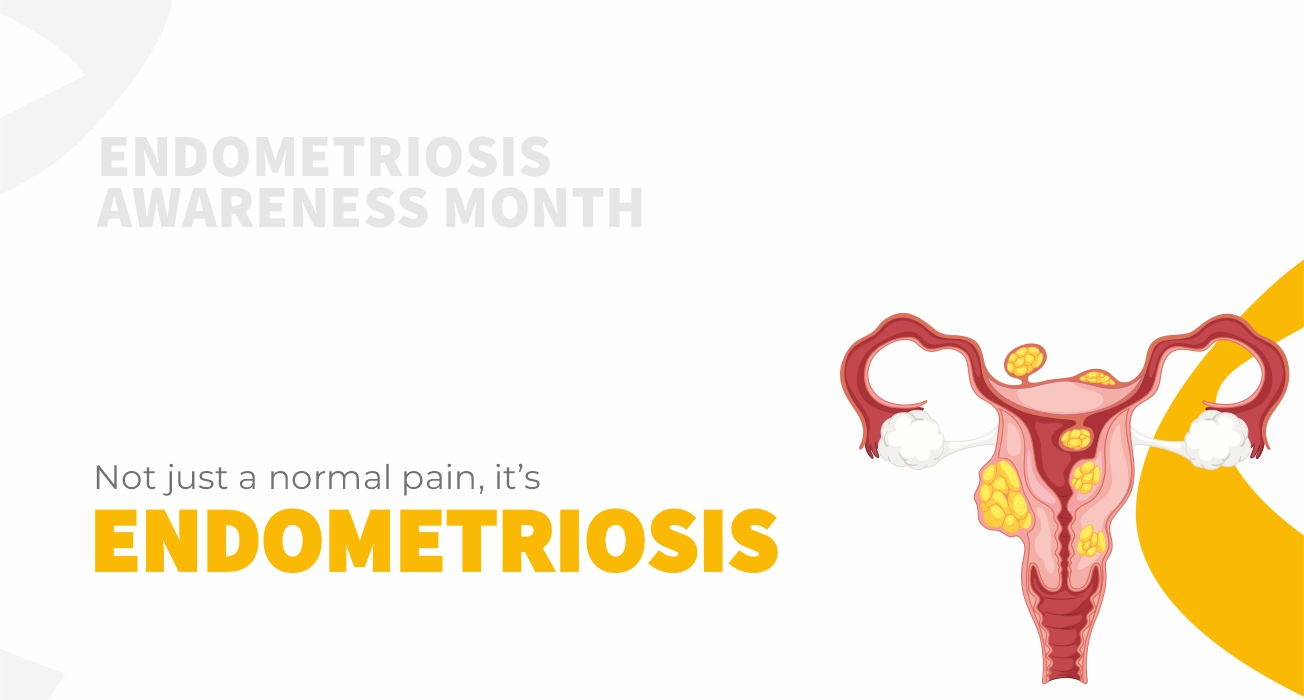
More than 25 million women are estimated to be suffering from endometriosis in India, among which the majority of them are undiagnosed. The symptoms of endometriosis are commonly dismissed as ‘women’s troubles’ or psychological pain.
Endometriosis occurs when tissue resembling the lining of the uterus grows outside the uterus. Most often endometriosis is found on the ovaries, fallopian tubes, and tissue lining of the pelvis.
Studies show it can take up to seven years for a woman to get a diagnosis of endometriosis because symptoms may mimic other common conditions, such as irritable bowel syndrome or pelvic inflammatory disease. And misconceptions about the disease, including the 9 myths below, may keep women from getting the correct diagnosis and medical help.
March is #EndometriosisAwarenessMonth and here are 9 myths- and the facts- around one of the most common but less talked about conditions.
Myth #1: Endometriosis is a rare condition.
Fact: Endometriosis is not rare, and it affects an estimated 10% of women of reproductive age.
Myth#2: Endometriosis only affects the uterus.
Fact: Endometriosis can affect various organs in the body, including the ovaries, fallopian tubes, bladder, and bowel.
Myth#3: Endometriosis only affects older women.
Fact: Endometriosis can affect women of any age who are menstruating.
Myth#4: Endometriosis is a sexually transmitted infection.
Fact: Endometriosis is not caused by sexual activity, and it is not contagious.
Myth#5: Endometriosis only causes menstrual pain.
Fact: Endometriosis can cause a variety of symptoms, including pelvic pain, pain during intercourse, heavy periods(that last more than 7 days), and infertility.
Myth#6: Endometriosis can be cured.
Fact: There is no known cure for endometriosis, but there are treatments available that can help manage the symptoms.
Myth#7: Pregnancy cures endometriosis.
Fact: While pregnancy can temporarily alleviate endometriosis symptoms, it does not cure the condition.
Myth#8: Hysterectomy cures endometriosis.
Fact: While a hysterectomy (removal of the uterus) can alleviate endometriosis symptoms, it is not a cure for the condition.
Myth#9: Endometriosis is only diagnosed through surgery.
Fact: Endometriosis can be diagnosed through a combination of a patient's symptoms, physical examination, imaging tests, and laparoscopic surgery (if necessary).
How MapMyGenome’s Genomepatri can help you?
While the exact cause of endometriosis is still up for debate, research suggests genetics play a part. Women who have a family history of endometriosis are 7 to 10 times more likely to develop the condition compared to those who do not have such a history.
MapMyGenome’s Genomepatri can help you learn about your genetic predisposition to endometriosis. The detailed analysis from this once-in-lifetime, non-invasive genomic test helps to correlate your risk factors for endometriosis with your family history and helps you in making an informed decision about your lifestyle. Additionally, the actionable insights from a genetic counselor can guide you in regular health checkups and help in proactively mitigating the risk.
To find out more about Genomepatri & to order online, visit For more assistance call us at 1800 102 4595 or WhatsApp( 24 hours): +91 86883 10052





